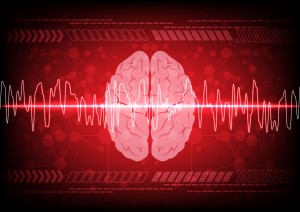Researchers Say Earlier ALS Diagnosis Shows Promise with Cutting-Edge Imaging, Neurophysiology Techniques

Researchers reviewed both current and emerging technical approaches that show the most promise in the detection of upper motor neuron (UMN) degeneration of ALS patients. By assessing and comparing the utility of cutting-edge imaging and electrophysiological approaches, researchers hope to identify biomarkers for UMN dysfunction that can serve as early diagnostics for ALS.
The review paper, “Assessment of the upper motor neuron in amyotrophic lateral sclerosis,” was published in Clinical Neurophysiology.
ALS is a motor neuron disease that affects more than 10,000 Americans and results in progressive muscle weakness. The disease is caused by abnormalities in the motor cortex, an area of the brain involved in controlling muscle activity. While both UMN and lower motor neuron (LMN) degeneration are important indicators in the diagnosis of this disease, standard diagnostic criteria exists only for LMN degeneration.
Currently, UMN degeneration is solely assessed in the clinic. The lack of standard diagnostic criteria for UMN degeneration leads to delays in diagnosis and treatment of ALS that can extend beyond a year. This is of particular concern because neuroprotective therapy has been shown to be most beneficial when initiated early in disease progression.
 Several techniques have been assessed for detection of UMN degeneration in ALS patients and were reviewed here. These include highly sophisticated neuroimaging and neurophysical techniques that rely on measurements such as reflex sensitivity, excitability, and neuronal integrity of the motor cortex, water movement in neurons and blood flow in vasculature, along with brain metabolism. Of the techniques reviewed, transcranial magnetic stimulation (TMS); triple stimulation technique (TST); diffusion tensor imaging MRI; magnetic resonance spectroscopy (MRS); and positron emission tomography (PET) have shown the most promise in detecting subclinical UMN degeneration and increasing prognostic value in ALS diagnosis.
Several techniques have been assessed for detection of UMN degeneration in ALS patients and were reviewed here. These include highly sophisticated neuroimaging and neurophysical techniques that rely on measurements such as reflex sensitivity, excitability, and neuronal integrity of the motor cortex, water movement in neurons and blood flow in vasculature, along with brain metabolism. Of the techniques reviewed, transcranial magnetic stimulation (TMS); triple stimulation technique (TST); diffusion tensor imaging MRI; magnetic resonance spectroscopy (MRS); and positron emission tomography (PET) have shown the most promise in detecting subclinical UMN degeneration and increasing prognostic value in ALS diagnosis.
In this review article, authors said that a collaborative effort between neurologists, neuroimaging specialists, and neurophysiologists, and the use of a multidiscipline approach will comprise the most efficient diagnostic biomarker. Specifically, they recommend a combination of TMS and PET imaging as the most current and efficient techniques to assess UMN degeneration, given the cost, availability, and available data for each of these techniques.
Moreover, these techniques complement one another when used in tandem, resulting in a comprehensive approach for detection of subclinical UMN dysfunction and assisting in the timely diagnosis of ALS.
While the authors acknowledge that additional challenges exist, including a lack of accessibility and a thorough evaluation of the proposed cutting-edge techniques, recent progress suggests that reliable biomarkers of UMN degeneration are on the horizon and will enable earlier diagnosis of ALS.






